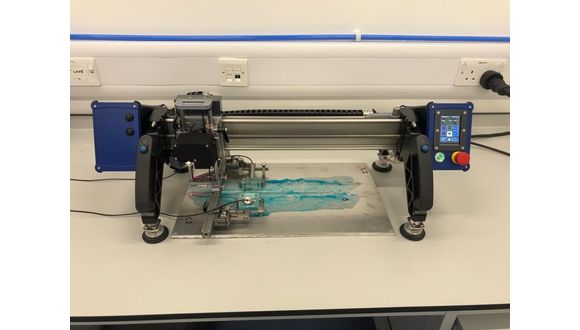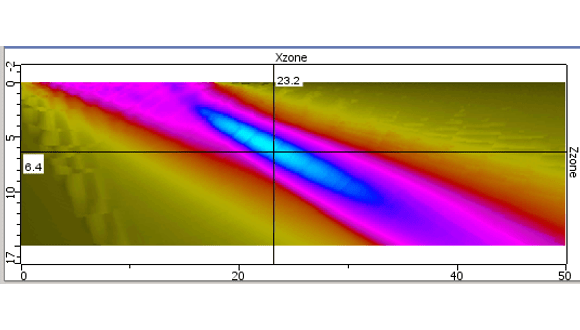Wed, 09 December, 2020
The Friction Harmonics / KiScan Project began in October 2018 and is due for completion in February 2021. Funded by Horizon 2020, this project aims to develop a non-linear ultrasonic scanning (NLUT) system for friction stir welding (FSW). This system will be able to detect kissing bonds and thereby allow for FSW to be taken up by the aerospace industry.
We are working alongside partners Vermon, I KNOW-HOW, Coşkunöz Holding and RI.SE to refine the NLUT system, which will be released under the name ‘KiScan.’
TWI’s non-destructive testing project leader, Karl Chisholm, took some time to explain more about the project…
Can you start by briefly explaining what kissing bonds are and why they are a problem for friction stir welding in the aerospace industry?
Kissing bonds occur in the root of a friction stir welded component, when the joint faces are in close contact with each other but are not chemically or mechanically bonded. The relatively small geometry and close contact nature of the defect results in some mechanical strength being maintained, but can reduce the fatigue performance of the component. Kissing bonds are challenging to detect with conventional NDT methods.
Kissing bonds reduce the stress-load resilience of FSW materials and can transform into cracks during service. Meaning the aerospace industry is unwilling to use FSW on more critical parts until kissing bond detection is improved.
How does KiScan work to locate these defects and solve the issue?
Through extensive research and development activities, the FrictionHarmonics project has developed KiScan, a non-linear ultrasonic inspection system customised for the detection of kissing bonds in FSW. KiScan uses finite amplitude or acousto-elasticity to investigate defects in materials. The finite amplitude harmonics measure the acoustic harmonics generated by the interaction of the soundwave with nonlinearities in the material. If finite amplitude ultrasound passes through a region of non-linear properties, it generates higher order acoustic harmonics signals. The harmonic of the fundamental wave is generated when the mechanical wave interacts with an imperfect interface. As the faces of kissing bonds are in very close contact, this results in ‘clapping and rubbing’ when excited by the input signal, generating higher harmonics of the input signal.
How has TWI been involved in the project?
TWI started the project by undertaking a simulation study to define the diameter and refracted angle of the single element transducers for the nonlinear ultrasonic testing (NLUT) hardware. The aim was to ensure a good beam profile for both the transmit and receive probe, with a -3dB focal zone at the depth of interest. The modelling results were used to aid Vermon in the design and manufacture of the transducers for integration into the KiScan system.
Our main role in the project was testing KiScan’s performance in an operational environment. A prototype scanner was constructed at TWI North in Middlesbrough in order to define the optimum inspection parameters, including the data acquisition process and signal processing algorithms. The system was then transported to our FSW facilities at Sheffield for performance testing, which was successful, gaining positive initial results. From the results, a performance assessment was conducted with modifications proposed to improve the system.
The project is due to end early next year, what remains to be done before KiScan can be released to the market?
On completion of the initial performance assessment, it was necessary to improve the data acquisition software and graphical user interface, in order to make the system more operator-friendly. Both tasks are being supported by the TWI software team at TWI Wales.
We have recently received the finalised KiScan scanner from I KNOW-HOW. We are in the process of conducting final trials with the scanner before the certification process commences. The new state-of-the-art scanner and software implementation will improve the KiScan system and generate improved results for the detection of kissing bonds in FSW materials.
The Friction Harmonics / KiScan project has received funding from the European Union's Horizon 2020 research and innovation programme under grant agreement No 820531.
 Figure 1. KiScan Scanner
Figure 1. KiScan Scanner
 Figure 2. CIVA modelling - 2.25MHz transmitter
Figure 2. CIVA modelling - 2.25MHz transmitter